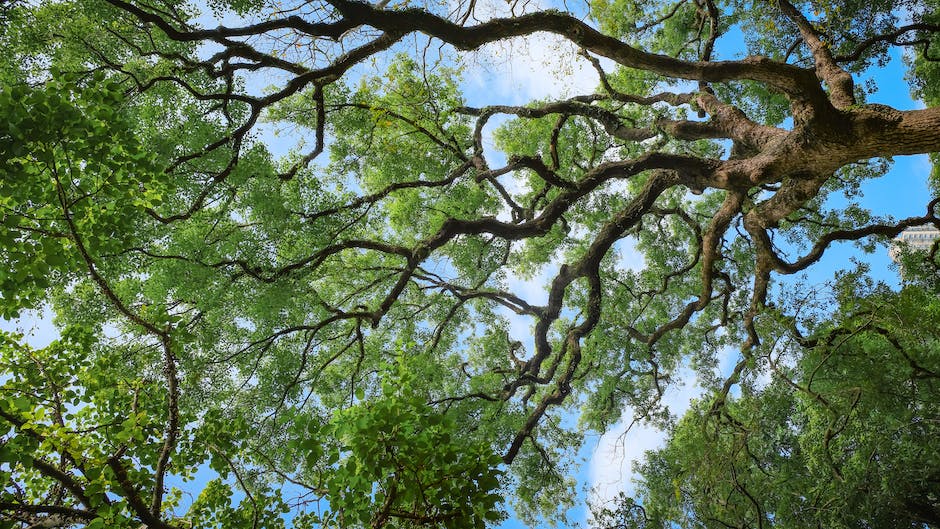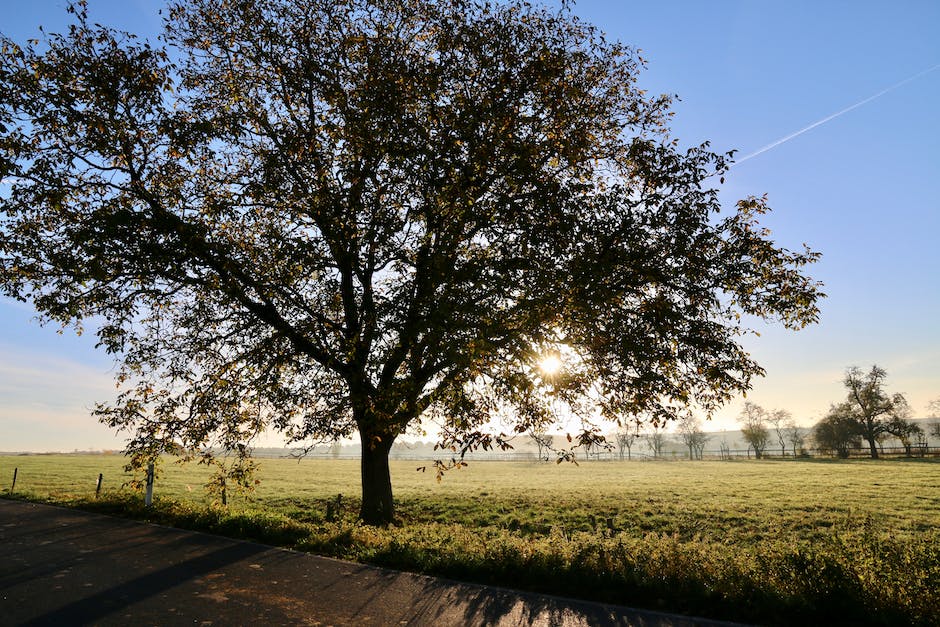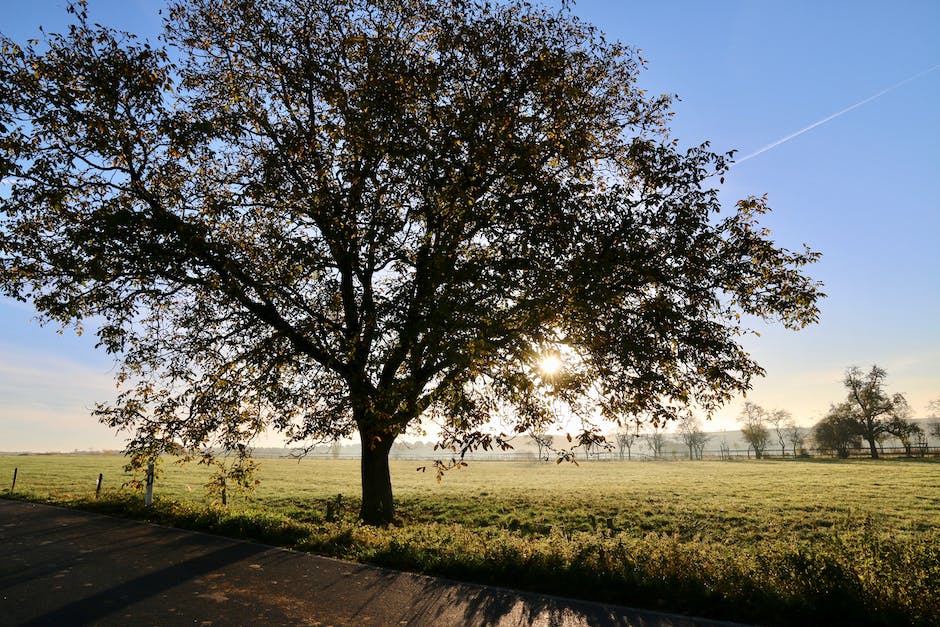Most trees in North America are deciduous, meaning they lose their leaves in the fall. However, there are a few exceptions, including the live oak tree. Native to the southeastern United States, the live oak is an evergreen tree that can grow up to 80 feet tall. Its thick, leathery leaves stay on the tree all year long, providing year-round shade and beauty.
No, live oak trees are not evergreen. They lose their leaves in the winter and new leaves grow in the spring.
Do live oak trees lose their leaves in winter?
While most trees lose their leaves in the winter, live oak trees drop their leaves in January through February. Live oaks are not true evergreens like other oaks are. They will drop their old leaves in the winter and regain new ones in the spring. The leaf drop usually occurs over 2-3 weeks.
The name “Live Oak” is derived from the fact that these trees don’t change colors in fall or take on a “dead appearance” like other oak trees in winter. While they do drop their leaves, it is usually in spring when new leaf growth pushes off the older leaves.
Are oak trees considered evergreens
Oak trees are a type of shade tree or shrub from the genus Quercus. They are in the Fagaceae family, along with beeches and chestnuts. There are over four hundred oak tree varieties. Some are evergreen, but they are mostly deciduous trees with green foliage that turn yellow, orange, and red during fall.
Live oaks are not actually evergreen trees, despite their name. They will drop their old leaves in the spring as new leaves start to emerge. This is a completely normal process and is not indicative of a disease problem.
How fast do live oaks grow?
The growth rate of this tree is considered to be medium, with an annual height increase of 13-24 inches. This tree is a good choice for those who are looking for a moderately sized tree for their landscape.
The clinging of dead leaves, commonly referred to as marcescent leaves, is a common sight in the forests of the Midwest on certain oaks (Quercus spp), American beech (Fagus grandifolia), ironwood (Ostrya virginiana), and musclewood (Carpinus caroliniana). The leaves remain on the tree throughout the winter and often into the spring before they finally fall off. While the exact reason for this behavior is not fully understood, it is thought to be related to the tree’s nutrient needs. The leaves may provide the tree with essential nutrients that it would otherwise not be able to obtain from the soil.
What’s the difference between an oak tree and a live oak tree?
Live oak trees are generally found in regions with mild winters and moderate to subtropical climates. Because these trees keep their leaves all year, they are an important source of food and shelter for many animals. Live oaks also play an important role in the ecosystem by providing nesting sites and shade for other plants and animals.
Live oaks are essential habitats for many plants and animals. Their acorns provide food for mammals, birds, and insects, while their branches support numerous epiphytic plants, including mosses, ferns, lichens, and bromeliads.Additionally, live oak leaves host moth and butterfly larvae. Consequently, live oaks play a vital role in ecosystems and deserve our protection.
Is live oak a messy tree
It can get very messy and you may find yourself raking leaves constantly. Adding insult to injury, once the leaves are finally done falling, the oak will drop very messy pollen tassels. Allergies will be miserable.
Although they are called “live oaks”, southern live oaks are actually a type of evergreen. They replace their leaves over a short period of time in the spring, rather than in the fall like most oak trees. This makes them well-suited for warm climates where the leaves would otherwise quickly become dried out and battered by the sun.
What kind of oak trees are evergreen?
Some of the evergreen oaks have new leaves that are brightly colored. The Emory oak has yellow/orange new leaves, while the escarpment live oak has new leaves that are brightly colored. The loquat oak has new leaves that are brightly colored. The holly oak has new leaves that are brightly colored. The silver leaf oak has new leaves that are brightly colored.
The Evergreen Oak (Holm Oak) Quercus ilex is a non-native invasive plant. A very popular, large tree frequently planted in parks, churchyards and large gardens. Unlike the native oak it is evergreen and has shiny, dark green leaves that are slightly toothed like holly.
Why don’t live oaks lose their leaves
As live oaks are considered evergreen, they hold onto their leaves through the winter. However, many live oaks will drop most or all of their foliage during this time. They quickly send out new leaves, so they are only leafless for a brief moment.
An oak tree typically matures and begins producing acorns at anywhere from 20 to 40 years old. Its annual acorn productivity generally peaks at around 80 to 120 years old. Some oaks can live even longer than that; live oaks in Texas, for example, have been known to exceed 300 years in age or more in very rare cases.
Why is my live oak losing leaves in summer?
Oak wilt is a common disease that affects live oak trees. The disease is caused by a fungus that invades the tree through wounds in the bark. The fungus then clogs the tree’s vascular system, preventing water and nutrients from flowing properly. This can lead to the tree’s leaves turning brown and falling off.
The white oak is a superior shade tree that grows 12′-15′ over a 10 to 12 year period, reaching 80 feet or so. Fall color is brown to rich red. White Oak acorns are a preferred food source for many mammals and larger birds.
Do live oaks need a lot of water
As you can see, oak trees are very thirsty and require a lot of water to stay healthy and to grow. Make sure you give them a consistent supply of water, especially during the hot summer months.
Southern Live Oak is a popular timber tree in the southern United States due its rapid growth and strong wood. The tree is also known to have a relatively short lifespan compared to other timber trees, with the oldest known specimens only living to be around 200-300 years old. The heavy wood of the Southern Live Oak was once used extensively in shipbuilding.
Are oak trees high maintenance
Oak trees are known for being low-maintenance and not requiring much care. However, young oak trees need to be properly pruned in order to encourage new growth and full canopies. Pruning young oak trees is essential for their development and health.
Oaks are fast growing and sturdy native shade trees. They are long-lived and can grow from 1 to 3 feet per year throughout their lifetime. They grow fastest in the first 10 or 15 years. Fast growing oak trees can easily grow 2 to 3 feet per year when they are young.
What tree keeps leaves all year
An evergreen tree is a great addition to any home. Not only are they beautiful and add to the aesthetics of your property, but they are also low-maintenance. You won’t have to worry about leaves falling and needing to be raked up, and they will stay green and full all year long.
Water oak and laurel oak are two of the most popular types of oak trees. They are known for their tall, upright growth habit and their large, conspicuous crowns. While they share many similarities, there are also some important differences between these two species.
Water oak is more widely distributed throughout the southeastern United States, while laurel oak is more common in the southern Appalachian Mountains. Water oak typically reaches a height of 80-100 feet, while laurel oak is slightly shorter, typically reaching a height of 60-80 feet. Both species have a similar spread, with water oak typically having a slightly larger crown than laurel oak.
Water oak is generally considered to be more tolerant of wet soils than laurel oak, and it is often found growing along streams and in floodplains. Laurel oak, on the other hand, is more tolerant of dry soils, and is often found growing on ridge tops and in upland areas.
Both species are susceptible to decay problems as they reach maturity, but water oak is particularly susceptible to heart rot. Both species also produce acorns, which are an important food source for wildlife.
Water oak and laurel oak are two of the most popular oak trees for landscaping. They are
Are live oaks easy to grow
Coast Live Oak trees are tolerant of a variety of soils, but they prefer deep, well-draining loam and rocky sites. In their native habitat, they are normally found on coastal hills and plains, usually near year-round or perennial streams. Coast Live Oaks are fairly easy to grow.
Most deciduous trees lose their leaves in the winter and appear dead. Live oaks get their name from the fact that they lose and replace their leaves gradually throughout the year, so they always look “live”.
How far should I plant a live oak tree from my house
When deciding how close to plant your live oak to your house, keep in mind that the tree’s sprawling branches can drop leaves and even branches on your home. Live oaks can have a spread of up to 120 feet, so plant your tree at least 15 feet from your home, and ideally more.
Oak decline is a problem that can be caused by a number of factors, including drought, defoliation, and fungi that cause stem cankers or root diseases. Wood-boring beetles can also contribute to the decline of oak trees. The interaction of these factors may result in the death of oak trees in a local or regional area.
Conclusion
Based on my research, Live Oak Trees are not evergreen, but they are semi-evergreen. This means that they will usually lose their leaves during the winter months, but there are some cases where the leaves will stay on the tree year-round.
Live oak trees are evergreen, meaning that they have leaves all year round. This is differ
Jackson Hill is a passionate arborist with years of experience in the field of trees. He developed his fascination with trees at a young age, spending countless hours exploring the forests and climbing trees. Jackson went on to study arboriculture and horticulture at Michigan State University and later earned a degree in forestry from the University of Michigan.
With his extensive knowledge and expertise, Jackson has become a trusted authority on trees and their impact on the environment. His work has helped shape the field of arboriculture and he continues to be a leading voice in the industry.
